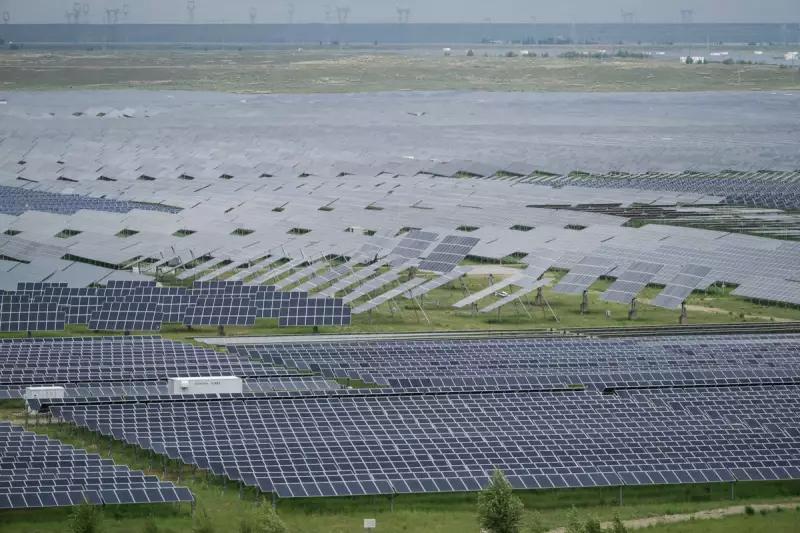
In a startling development that challenges conventional green energy narratives, China's ambitious solar power project on the world's highest plateau is facing serious scientific scrutiny. Researchers now suggest that the massive installation could potentially alter local climate patterns and even contribute to carbon emissions rather than reduce them.
The Tibetan Plateau, often called "The Third Pole" for its vast ice reserves, hosts one of China's most significant solar energy ventures. While renewable energy projects typically receive universal praise for combating climate change, this particular installation presents a complex environmental puzzle that experts are racing to understand.
The Albedo Effect: A Climate Conundrum
At the heart of the concern lies a phenomenon known as the albedo effect. The natural white surface of the Tibetan Plateau reflects substantial sunlight back into space, helping to regulate regional temperatures. The dark solar panels, however, absorb significantly more heat, potentially creating localized warming effects that could accelerate the melting of surrounding glaciers.
Dr. Gang Huang, a leading researcher at the Chinese Academy of Sciences, explains: "The Tibetan Plateau's delicate ecosystem responds dramatically to surface changes. Our models indicate that large-scale solar farms could trigger unintended consequences that might offset their carbon reduction benefits."
Carbon Emission Calculations
The research team employed sophisticated climate models to simulate the long-term impacts of the solar installation. Their findings suggest that while the solar farm successfully generates clean electricity, the altered surface energy balance could effectively create a carbon debt equivalent to 40-60 grams of CO2 per kilowatt-hour generated.
This places the project's net environmental benefit in question, particularly when compared to alternative renewable energy sources that don't involve such sensitive high-altitude environments.
Broader Implications for Renewable Strategy
The situation on the Tibetan Plateau raises important questions about how nations approach renewable energy expansion. Environmental economist Dr. Li Wei notes: "We must consider not just carbon reduction but overall ecosystem impact. The perfect solution in one location may be problematic in another."
Scientists are calling for more comprehensive environmental impact assessments for large-scale renewable projects, particularly in ecologically sensitive regions like high-altitude plateaus and polar areas.
As China continues to lead global renewable energy expansion, the findings from the Tibetan Plateau study offer crucial insights for policymakers worldwide. The balance between urgent climate action and environmental preservation remains delicate, requiring nuanced approaches to sustainable development.
